There have long been rumblings that the American Psychiatric Association (APA) was undertaking a thorough review of its Diagnostic and Statistical Manual, Fourth Edition (DSM-IV). The ostensible goal of such a review would be to create a more accurate and in-depth edition of the DSM, which was last updated in 1994.
After ten years of ongoing debate, the numerous APA work groups investigating potential revisions to various diagnoses and categories to be included in a planned fifth edition have presented their suggestions to the APA. Some of these changes are likely to be as controversial as current classifications in the DSM-IV, while others will pass barely noticed into the new DSM-5 (for example, the switch away from Roman numerals in the title). A number of these proposed changes directly impact conditions treated here at the OCD Center of Los Angeles. To wit:
OCD and Anxiety Disorders
The APA is considering changing the name of this category to Anxiety and Obsessive-Compulsive Spectrum Disorders. This seems completely unnecessary, but harmless. For years there have been reports that Obsessive-Compulsive Disorder was going to be removed from the Anxiety Disorders category, and reclassified in its own category. The rationale for this idea was that OCD had been found to have a neurological basis. That would have been spectacularly ridiculous. It seems likely that, in time, researchers will discover that many, if not virtually all of the conditions in the DSM have some neurological basis. The DSM-IV made quite clear that its focus was not on the cause of the disorders it classified, nor on the treatment of those conditions, but rather on the presenting symptoms that define the conditions. Certainly, one of the primary defining characteristics of OCD is anxiety. We have treated hundreds of individuals with OCD over the years, and I can comfortably say that the one thing that absolutely unites every single one of them is this – they are highly anxious about their obsessive and compulsive symptoms.
Panic Disorder
Currently, the DSM-IV lists two options for those with Panic Disorder
- Panic Disorder with Agoraphobia
- Panic Disorder without Agoraphobia
The DSM-IV also lists Agoraphobia Without History of Panic Disorder as a separate condition. The APA is wisely considering condensing the two separate diagnoses of Panic Disorder into one, classified simply as Panic Disorder. However, they are also planning to maintain Agoraphobia as a separate condition, but minus the “…Without History of Panic Disorder” appendage. This is utter nonsense. In years of treating people with anxiety, I have never once seen a client who experienced Agoraphobia without having panic attacks. While the theoretical possibility exists of someone having Agoraphobia without having panic attacks, the role of Agoraphobia in that person’s life would be to avoid experiencing a panic attacks. Even in their new description of Agoraphobia, the APA refers to the fear of “panic-like symptoms” and “anxiety about having a panic attack, panic-like or other symptoms”. The continuing inclusion of Agoraphobia as a separate condition is pointless and will unnecessarily complicate the diagnostic process.
Body Dysmorphic Disorder (BDD)
Body Dysmorphic Disorder is currently classified as a Somatoform Disorder, along with Hypochondriasis, Somatization Disorder, Undifferentiated Somatoform Disorder, Pain Disorder, and Conversion Disorder. The APA is recommending two noteworthy changes for the classification of BDD. First, it is suggesting that BDD be moved from its current category of Somatoform Disorders into the new category of Anxiety and Obsessive-Compulsive Spectrum Disorders. I couldn’t agree more. BDD has much in common with OCD and, very little in common with most Somatoform Disorders.
The second proposed change is to add a specifier for Muscle Dysmorphia, in which an individual’s obsession is that his or her body is too small or is insufficiently muscular. The rationale provided by the APA is that Muscle Dysmorphia has differences from other forms of BDD, specifically higher rates of suicidality and substance abuse, and that the specifier will thus have clinical utility.
Hypochondriasis
The new DSM-5 is proposing to dramatically alter its conception of Hypochondriasis, which, as noted above, is currently classified as a Somatoform Disorder. The plan is to combine four of the Somatoform Disorders – Hypochondriasis, Somatization Disorder, Undifferentiated Somatoform Disorder, and Pain Disorder –into a new condition called Complex Somatic Symptom Disorder (CSSD). Conversion Disorder would remain a separate Somatoform Disorder, and BDD, as noted above, would be moved to the new Anxiety and Obsessive-Compulsive Spectrum Disorders category.
I would argue that Hypochondriasis is phenomenologically distinct from Somatization Disorder, Undifferentiated Somatoform Disorder, and Pain Disorder, and that combining it with these conditions ignores that reality. Simply put, Hypochondriasis is not about the vague physical complaints, pain, or pseudoneurological symptoms seen in these other conditions. Hypochondriasis is about the abject terror that one has a disease, illness or medical condition that will either result in death, or at the very least a miserable, pain-filled life. In other words…Hypochondriasis is an anxiety disorder. In fact, the APA is suggests in this revision of the DSM that the fears experienced by those with what has heretofore been called Hypochondriasis now be called “health anxiety”. As such, it would more appropriately be classified in the new Anxiety and Obsessive-Compulsive Spectrum Disorders category.
Apparently, the framers of the new DSM-5 agree that this is at least a possibility, as they note in their description of CSSD that “if patients present solely with health-related anxiety in the absence of somatic symptoms, they may be more appropriately diagnosed as having an anxiety disorder”. Agreed.
Trichotillomania
The APA is considering two changes for Trichotillomania. First, renaming the condition simply as Hair Pulling Disorder. The Trichotillomania Learning Center (TLC), the largest advocacy and education organization in the world for this condition, has long proposed a name change along these lines. The primary goals of the name change would be two-fold. First to reduce confusion about the nature of the condition – let’s face it, as a name, Hair Pulling Disorder is a lot more to the point. And second, to remove the stigma associated with the condition by virtue of the “-mania” part of its current name. Hair pulling has nothing to due with “mania” or Bipolar Disorder, so this name change intuitively seems like a good idea.
The other change that the APA is recommending for Trichotillomania is to reclassify the condition in its planned new category of Anxiety and Obsessive-Compulsive Spectrum Disorders. If this new category indeed gets formed, then this would be a far more appropriate place for Trichotillomania than its current home in Impulse Control Disorders, where it resides with Pathological Gambling, Pyromania, and Intermittent Explosive Disorder, none of which have any relationship whatsoever to Trichotillomania.
Skin Picking Disorder
Finally, the APA is beginning to pay attention to Skin Picking Disorder (aka Dermatillomania), which the proposed DSM-5 succinctly (if incompletely) describes as “recurrent skin picking resulting in skin lesions”. Currently, there is absolutely no mention of skin picking as a condition in the DSM-IV. It is as if it doesn’t exist, which would be news to the hundreds of people who have sought treatment at our center for this condition. Many people believe their skin picking is a symptom of Obsessive-Compulsive Disorder (OCD), primarily because that is what they have previously been told by well-meaning, but misinformed therapists. While skin picking has certain obsessive and compulsive features, and qualifies as an Obsessive Compulsive Spectrum Disorder, it is quite different from OCD. In fact, the condition with which Skin Picking Disorder has the most in common is Trichotillomania.
As a result of its non-existence in the DSM-IV, treatment centers that specialize in treating this heretofore unnamed, but fairly common condition, utilize various different names for it, including:
- Compulsive Skin Picking
- Chronic Skin Picking
- Neurotic Excoriation
- Dermatillomania
- Pathogenic Excoriation
Psychologist James Claiborn wrote a great article about this condition a few years back aptly titled “Skin Picking: A Disorder in Search of a Name”. Hopefully, the APA will soon rectify this problem. My only complaint is that rather than classifying Skin Picking Disorder in the DSM-5 as a codable disorder (and thus covered by insurance), the current proposal is to list it in the Appendix for Further Research. While this condition certainly merits further research, it is hardly an unknown entity. If the APA, as planned, creates a new category called Anxiety and Obsessive-Compulsive Spectrum Disorders, then this is where it belongs, right along side Trichotillomania.
Olfactory Reference Syndrome (ORS)
Like Skin Picking Disorder, the APA has long ignored Olfactory Reference Syndrome, which the proposed new DSM-5 perfectly describes as “preoccupation with the belief that one emits a foul or offensive body odor, which is not perceived by others.” And like Skin Picking Disorder, the main problem is that the APA is planning to list ORS in the Appendix for Further Research. We have treated many people with this condition over the years, and it is clearly an Obsessive Compulsive Spectrum Disorder with a strong anxiety component. As such, it belongs in the new Anxiety and Obsessive-Compulsive Spectrum Disorders category.
The above are just a few of the many changes proposed by the APA for the upcoming revision to the DSM. There are many other changes related to conditions that are not directly associated with OCD or other anxiety-based conditions. The APA is accepting comments on the revisions until April 20, 2010.
•Tom Corboy, MFT, is the director of the OCD Center of Los Angeles, a private, outpatient clinic specializing in Cognitive-Behavioral Therapy (CBT) for the treatment of Obsessive-Compulsive Disorder (OCD) and related conditions. In addition to individual therapy, the center offers six weekly therapy groups, as well as online therapy, telephone therapy, and intensive outpatient treatment. To contact the OCD Center of Los Angeles, click here.





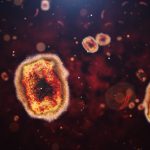




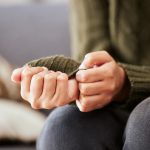



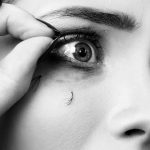




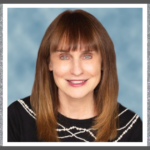


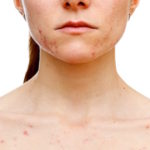




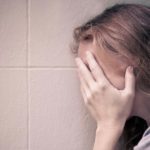

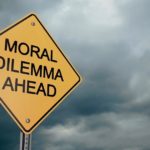
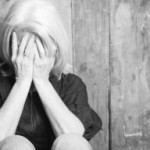


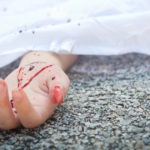
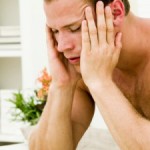
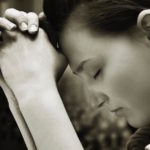



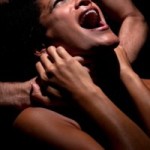


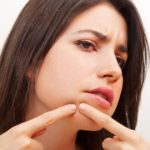



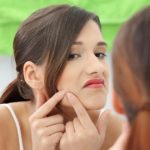
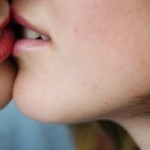





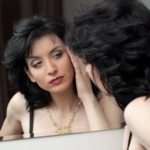







7 Comments
What about Parental alienation syndrome. This is a very real condition that needs to be recognized in the new DSM so that judges, lawyers and legislators can finally have the tools to fight this disorder that affects so many children and their targeted parents.
Hi Joanne,
Thank you for your comment.
I do not know much about Parental Alienation Syndrome, other than brief news items I have read over the years. I know that the APA is accepting comments on the proposed changes, so this might be an opportunity to visit their site and voice your concerns.
Tom
Wow really helpful overview of the disorders!
I’m glad the article is helpful. Thank you for your kind words.
I don’t know about the new category for skin picking. I am a skin picker and I’ve always viewed it as a compulsion, something I just can’t stop myself from doing repeatedly. I would never have connected it to anxiety. I tend to do it when I’m relaxing, watching television most often. Unless you’re thinking it is an underlying anxiety that you don’t necessarily feel or notice?
Hi Wendy,
Thank you for your comments about skin picking.
You raise a good point. We have had many clients over the years who report a similar pattern of frequently picking while relaxing. However, many of these same clients also report that they pick more when anxious. The proposed name of possible new category is Anxiety and Obsessive-Compulsive Spectrum Disorders, which is far broader than the current Anxiety Disorders classification.
Regardless of the classification issue, I am glad that the APA is finally beginning to recognize this condition. As I noted in the article, there is no mention of skin picking in the current DSM, as if this condition simply doesn’t exist.
Thanks for this very simple explanation. My partner has OCD, agoraphobia and depression. I was wanting to learn about anxiety in general, so this was a great overview